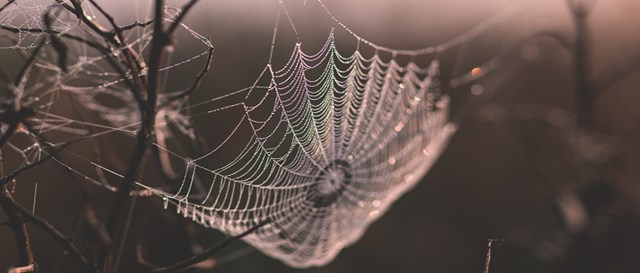
From ancient paper to luxurious clothing and parachutes, humans have been capitalising on the extreme strength, lightness and softness of silk for thousands of years.
Now, scientists are on the verge of harnessing its unique properties in a completely different way – for the treatment of illnesses like Alzheimer’s and Parkinson’s.
Researchers at the Weizmann Institute of Science in Israel have found that the structure of the silk fibrils in spider webs and silkworm cocoons is very similar to that of the cell-destroying protein clumps, or amyloids, that form in the brains of Alzheimer’s suffers.
Amyloids are responsible for the production of toxic plaques that attack brain cells. But studies being conducted by Dr. Ulyana Shimanovich, a lead researcher at the Weizmann Institute, are seeking to establish whether these proteins can be transformed into bio-materials that can heal the cell instead.
“In case of neurodegenerative disorders, these proteins have a tendency to self-assemble and to form fibres. A similar self-assembly process happens with silk,” Dr. Shimanovich explains.

Dr Shimanovich and her team have already identified what triggers the mutation process in silk. The changes, it turns out, are controlled by the animal weaving them, be it a spider or silk worm.
Pinpointing what causes similar changes in the structure of the protein forming in brains is the next task.
“We are trying to understand how nature uses the same mechanism to produce similar fibres, but the performance of these fibres in terms of their effect on living cells is completely different,” she explains.
Resolving this conundrum is becoming more urgent: dementia affects 47 million people around the world, with an estimated annual cost of USD605 billion. By 2050, the number of sufferers is forecast to nearly triple, with the spread of the disease accelerated by a rapidly ageing global population.
While Dr. Shimanovich’s team have found that silk proteins produced by silkworms can halt the production of amyloid plaques in the human brain, this is only the first stage of a longer battle.
The protein does not destroy the amyloid clumps that have already formed.
The solution to that problem won’t come from spiders or silkworms – but it might from llamas and camels.
That’s because these animals have special antibody fragments, known as nanobodies, that are capable of destroying the fully-formed fibres – substances that could also be effectively deployed in the battle against human neurodegenerative disorders.
One complication is that, in nature, these nanobodies become inactive when exposed to the kind of warm and acidic conditions in which amyloids are produced. Luckily, Dr. Shimanovich explains, silk can come to the rescue, by stabilising the nanobodies in the form of single molecules.
So far, this technique has worked in the reaction flask, using silk protein molecules extracted directly from the silkworm gland and nanobodies produced by genetically modified e-coli bacteria in accordance with the genetic code gleaned from the llamas and camels.
The silk-nanobody complex was then converted into the particle and tested on relevant amyloids.
“We are testing our particles on human cells but it is not the entire human body so the process in living organisms is much more complex,” says Dr. Shimanovich. “The biggest challenge now is the complicity of the living organism; from cell to cell the conditions are changing so we need to take all these dynamics into account.”
Researchers at the Weizmann Institute also need to establish the optimum point at which to introduce the cure for maximum effect, and to tweak the recipe to accommodate the fact that various neuro diseases produce slightly different fibrous protein clumps.
Success could be a major step towards the development of new nano-scale therapies such as micro-reactors that provide time-release medications or nano-fibrils, whose anti-bacterial properties can be used to fight infection.
It is likely to be another 10 years before the solution has been perfected – and tested – sufficiently to be used in real people. But, if the science works, the knowhow from silk worms and llamas can prolong the lives of millions of people and slash healthcare costs.
